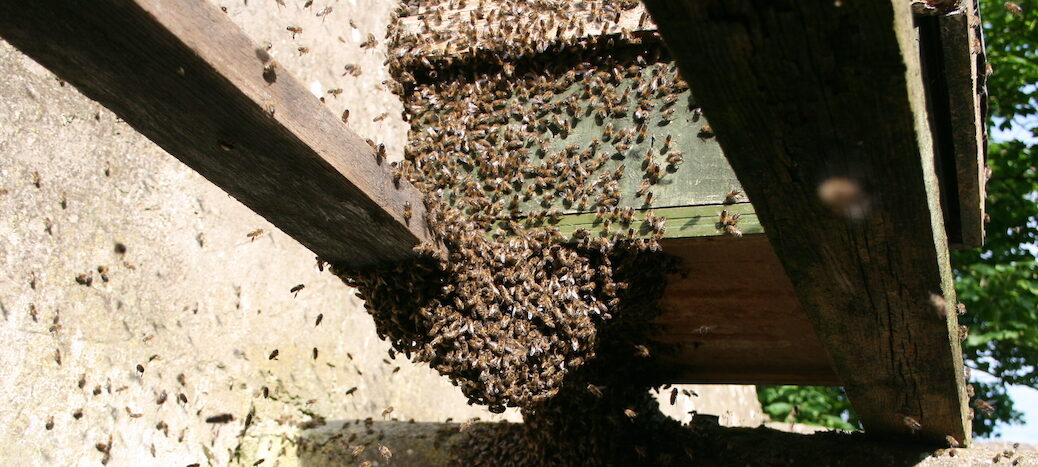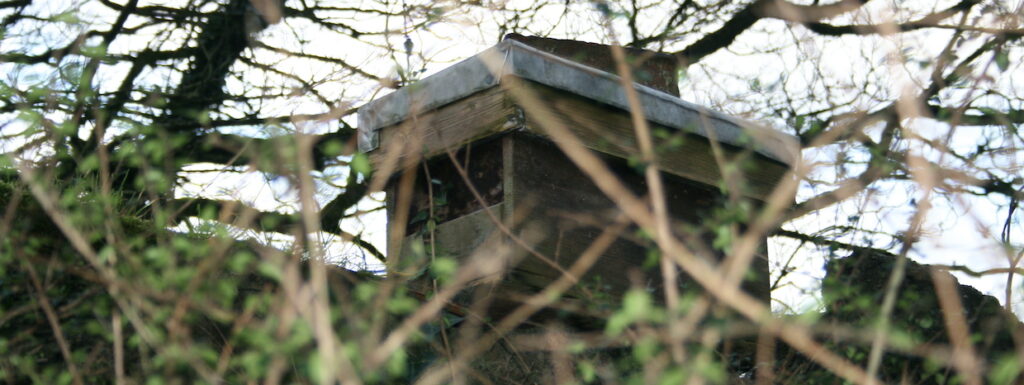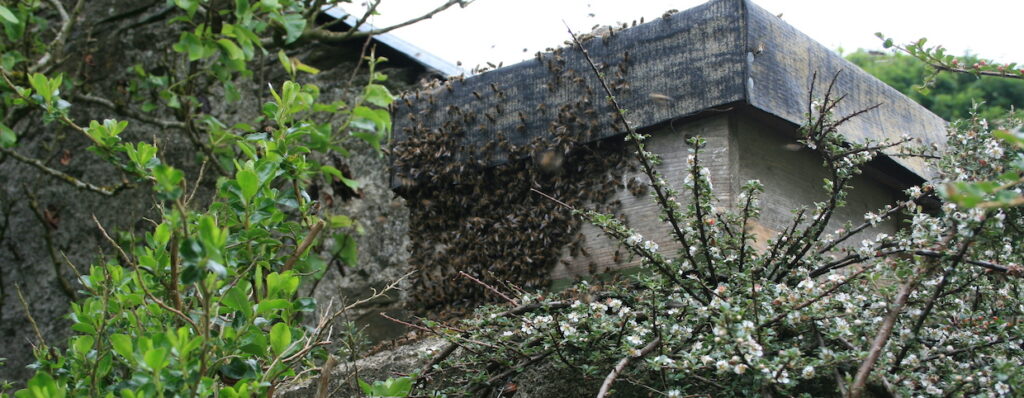Even if you are a bee-god and you think your swarm control technique is perfection personified – always set up a catcher hive because you might be wrong!
It’s also a good idea because when your catchers start to attract attention you can be sure some bees somewhere are having bad thoughts. Sprinke the scouts with a little flour and watch which hive they return to.
Points to consider when setting up a catcher hive are:
- Volume
- Entrance size
- Height from ground
- Aspect
- Presence of combs
- Number of options
1. Volume
When choosing a potential home, size matters.
When a swarm of bees moves into a new home, their priorities are to produce a viable sized colony with sufficient honey to get them through winter. It needs to be big enough but not too big. If it is too big, it will be draughty and cold, if it is too small there may not be room for the bees, their brood and their stores.
When studying wild bees, Tom Seeley found the smallest nest space to be 12 litres and the largest were about 100 litres with one outlier of 400 litres. However, most of the nests he found were between 30 and 60 litres. A National brood box has a capacity of about 36 litres, which is handy. Native Irish bees tend to overwinter quite a small colony so this size – at the lower end of the range should be about right.
I’ve had a lot of success with nucs too but beware – they can outgrow them very quickly.
Speaking of draughts – always set up a catcher hive with a solid floor. Given the choice, bees won’t accept a hive with a mesh floor.
2. Entrance size
The entrance size and position is always important for bees for the following reasons:
- Defense;
- Thermoregulation;
- Ease of access in summer.
However their requirements vary with the seasons.
Winter
A small entrance is important in winter to prevent draughts.
- A draughty nest means bees have to consume more of their precious stores to keep warm.
- They also prefer the entrance to be below the brood nest because heat rises and would be lost through a top entrance.
- A small entrance will also keep out pests and predators like mice or rats although once autumn has given way to true winter, fewer of these are about the place.
Summer
In summer, a small entrance can become a liability.
- On a busy summer’s day, a small entrance is a hindrance to the crowds of excited bees struggling to get in and out.
- On squally days when hordes of foraging bees come hurtling home all at the same time ahead of pelting rain can result in large numbers being dashed to the ground because they can’t get in quick enough.
- On a very hot day, the bees might overheat if the entrance is too small.
- However, wasps or robbing bees from other colonies are more easily repelled from a small entrance.
In Information Bulletin 187 Bait Hives for Honey Bees, Tom Seeley suggests a circular opening with a 1.5 inch diameter, however this would admit mice and even a rat so unless your bait hive is out of reach of these rodents, the standard 4 x 0.25 inch slot found in a National or Commercial winter entrance block should fit the bill.
3. Height
The higher you can get your bait hive, the better. However, you need to be pragmatic. Are you going to leave the bees to their own devices or do you plan to remove and relocate them?
If the latter, get them as high as is sensible. If the former – the sky’s the limit.
4. Aspect
When looking for a new home, bees like to face in a southerly direction. It is particularly important for them in winter. Winter sun slanting in through the entrance will entice them out for cleansing flights and they must appreciate the warmth of the sun on the hive front.
However, in summer, bees can overheat, so shade from summer foliage becomes important.
5. Presence of Combs
When a swarm moves into a new home their priority is to get the queen laying. This is particularly important if she is an old queen and if there is a long period of shitty weather, not unknown out here at the wet end of Europe. An old queen might fizzle out before the bees can draw comb for her then they are up shit creek without a paddle. They must either go back home or they might soldier on for a while with laying workers.
A few drawn combs in the catcher will allow the old girl to lay some eggs then if she does fizzle they can at least try and recover the situation.
The presence of some drawn combs with some granulated stores will attract bees too, even if they rob it out they will note the place and may come back when they are in need of a home.
If you plan to remove the bees, it is best to equip the hive with a crown board and a full complement of frames even if only a few are drawn. The rest can be equipped with a starter or even left empty. You will be amazed at the speed with which a strong swarm with a laying queen can draw wax and fill it with brood. If you don’t put frames in, those combs will be of the abstract wild variety and they’ll be suspended from the crown board – or the roof if you omitted it. I cannot describe to you the mess that happens if you arrive late and unthinkingly prise it off!
Number of Options
It seems to help if you put up more than one catcher hive per location. I’m not sure why – it’s an observation.
The more options you offer, the more likely they are to choose one of them rather than a more tricky location:
Native Irish Honey Bee Conservation
This country has the lowest tree cover in Europe which means homes for wild honey bees are scarce. No harm then to put up a box, with good thick walls for warmth, which you will leave alone. We have borrowed the bees from the wild for long enough so perhaps it is a good idea to provide homes for wild honey bees where they can be left alone to live and evolve in peace. In return, they will contribute their drones to the congregation areas and if they have evolved traits or behaviours which make the wild bees more able to tolerate Varroa and other diseases then we will all benefit.
Click here for more about swarming
Click here for how to hive a swarm
Further Reading
Bait Hives for Honey Bees by Thomas D. Seeley, Roger A.Morse and Richard Nowogrodzki
HoneyBee Democracy by Thomas D. Seeley 2010 Princeton University Press
Copyright © Beespoke.info 2022. All Rights Reserved.



